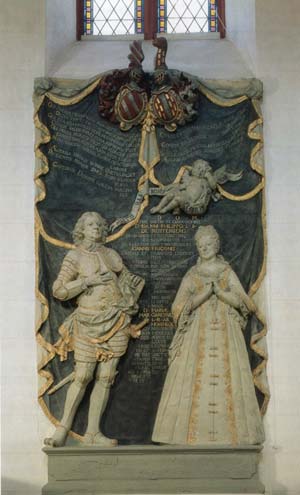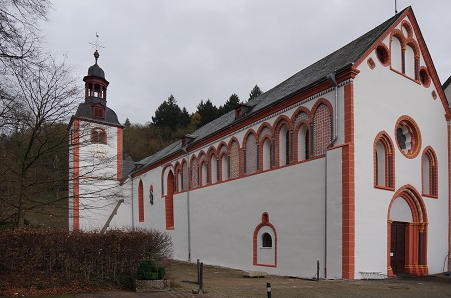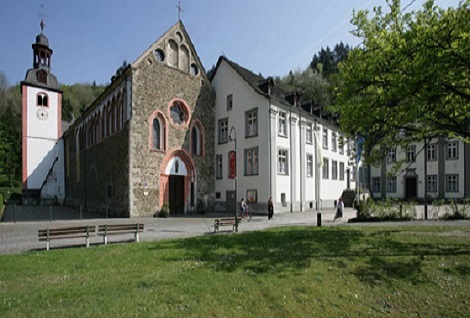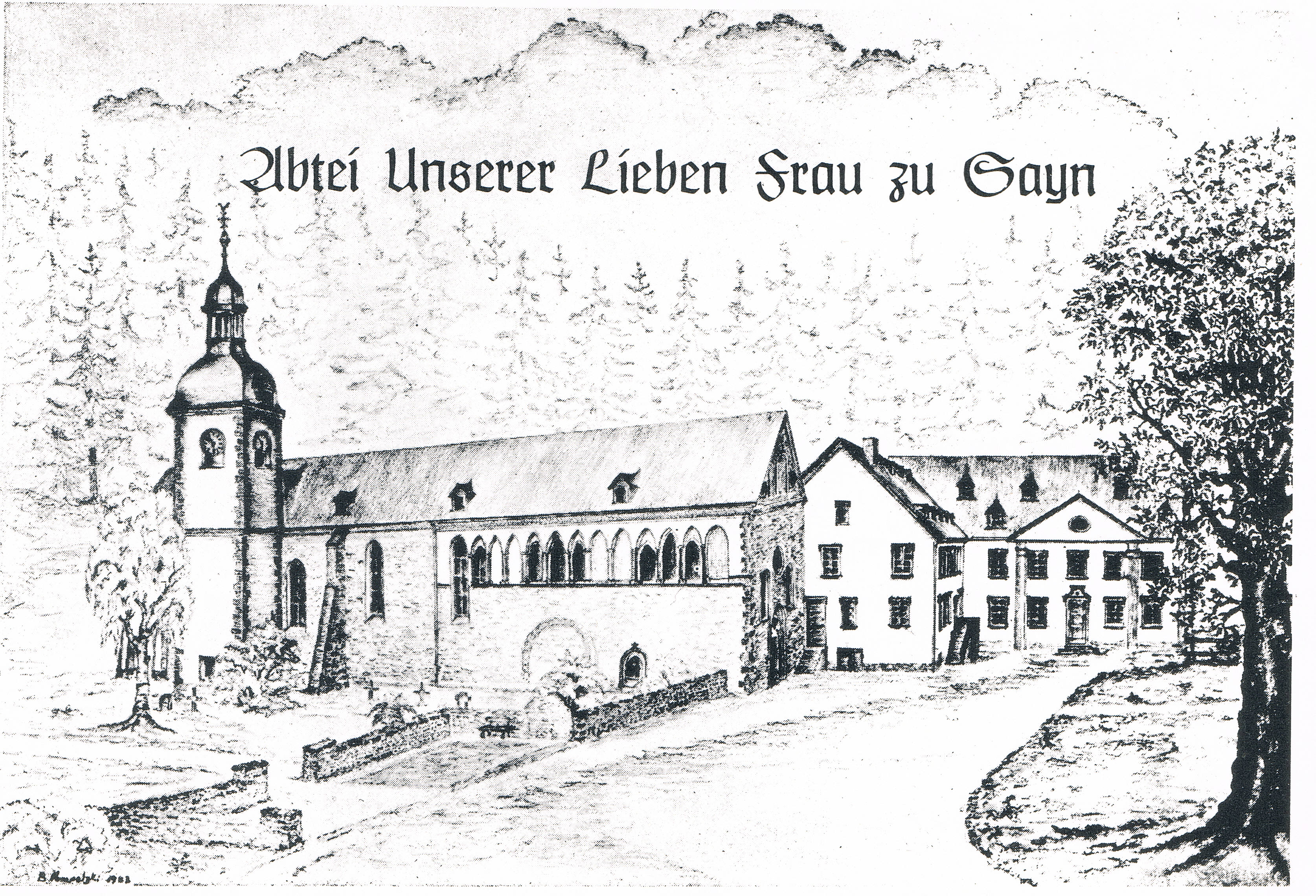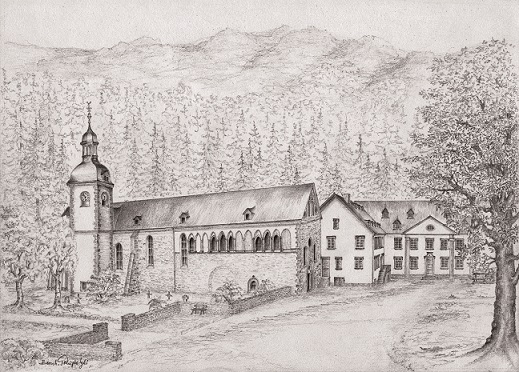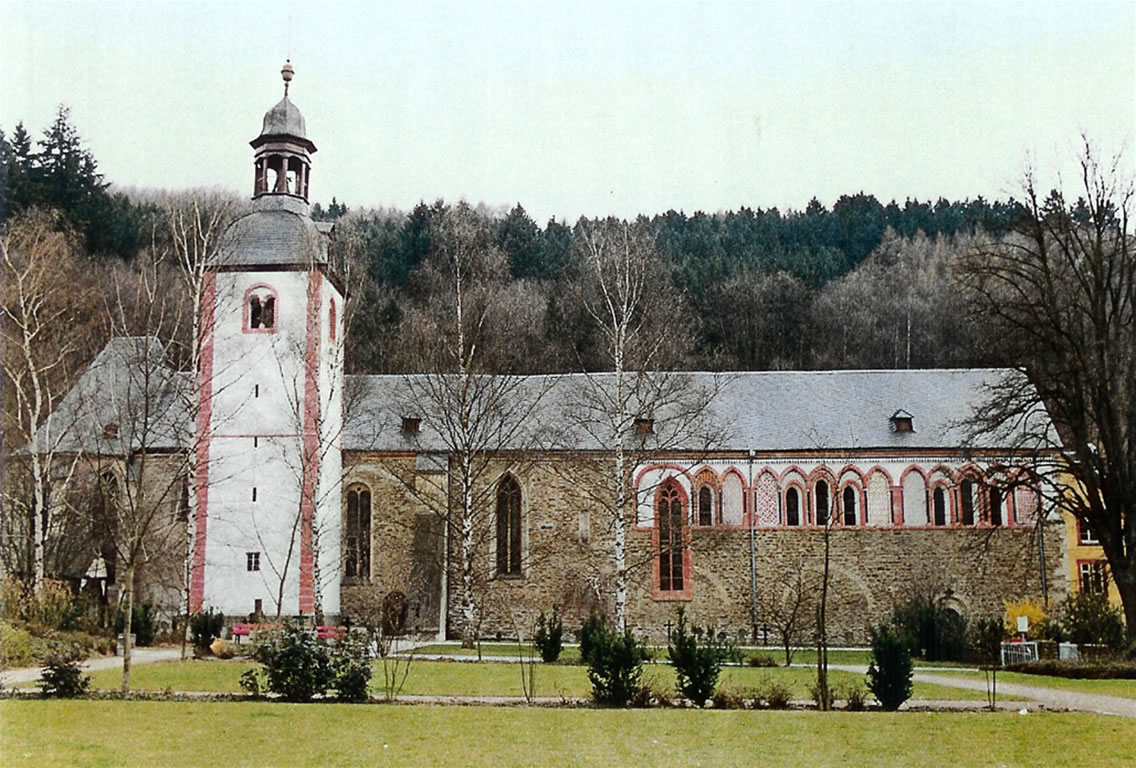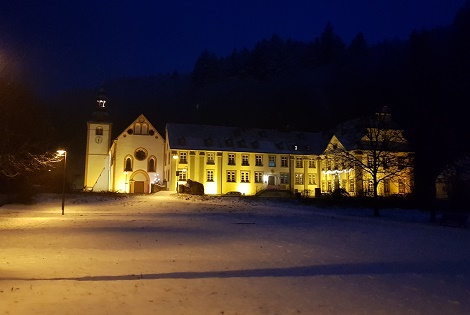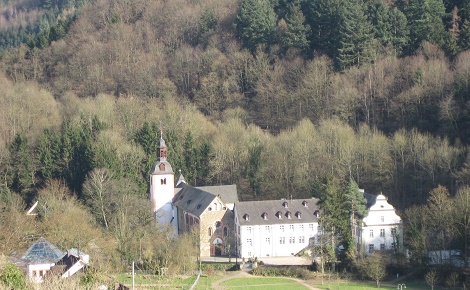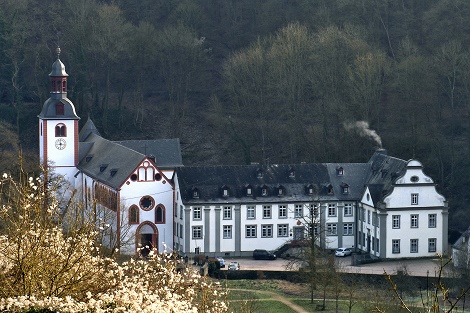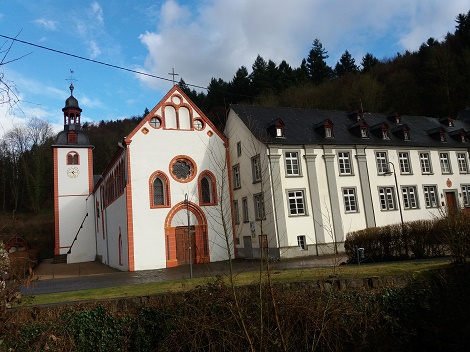The tomb of Baron Johann Philipp von Reiffenberg and his wife Maria Margaretha von Hoheneck
The above named tomb is exactly three centuries younger that of the Steins (+1722). It can be found in the fourth case bay of the nave on the north wall. The total height of 3,45m necessitated part of the window having to be walled up when it was installed.
The man is wearing armour, but not a helmet, in his left hand he is holding a bible, his right hand is placed on his breast and his fingers spread out. The woman, in a sumptuous floor length dress is holding a rosary: the marble tablet in front of which the people carved from sand stone are standing, sports a mourning Putto and is edged by the crests of the families Reiffenberg and Hoheneck.
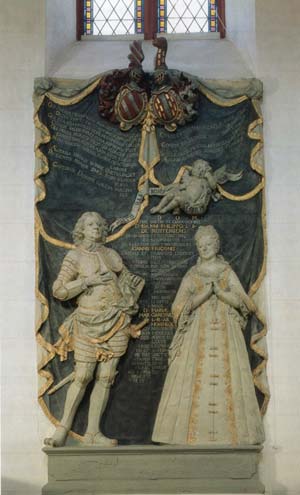
Inscriptions point out that the baron wrote down the history of his home town (tecto nomine scripsit IPVR, he wrote under a pseudonym IPVR = Johann Philipp von Reiffenberg). His „Antiquitates Saynenses“, which he began in 1684 and worked on later, is an important source of local history. The inscriptions between the married couple reveal that the Baron was a secret advisor to the three Trier Electors as well as to their officers in Montabaur, Herschbach, Grenzau, Vallendar, Sayn and Heimbach. From time to time he was also the high official in Ehrenbreitstein and as such commander of the fortification.
The „Antiquitates“prove that the popular supposition that the Sires Reiffenberg lived in the middle fortification, must be incorrect. The middle fortification is really a part of the earl’s fortification. The only building that can be referred to as Fortification Reiffenberg is the one which was once situated where the palace is now located and of which important parts have remained.
The society for the preservation and promotion of the abbey made it possible to remove the grey binding paint that had spoiled the tomb and also to have mistakes corrected, and the gold paint and the setting as a whole renewed. It was a fortunate decision not to forgo the additional renewal in this case. Some years later, when the floor was being lowered, it was hoped to find further inscriptions that had been chiseled. However the dampness of earth had destroyed them.
Members of the Reiffenberg family had come to Sayn in the 16th century from Oberreiffenberg (Taunus). They bought several buildings at the foot of the fortification hill and had building changes made and enlarged them. Friedrich von Reiffenberg (1515-95), a military war horse, who fought on many European battle fields, also treated the Sayn parish as he was used to doing from battle. He had a hole made in the ring wall in order to be able to enlarge his house and for some time did not bother to close it. His tomb, until recently on the south wall of the monastery is to be reinstalled.
The Reiffenberg crypt was opened in 1989 during the lowering of the floor of the abbey.
The Reiffenbergs were – like the Steins - fortification keeps for the Sayn Earls, who among other things were entitled to have a say in the appointment of the mayors, foresters, calibrators and other communal civil servants.
The fortification home was passed on to the family Boos-Waldeck, who, in 1757 had it rebuilt as a country house, which in turn became part of rebuilding in 1848-51 resulting in Prince zu Sayn-Wittgenstein’s fortification.
____________________________
Vergl. Dietrich Schabow: Sayner fortification keeps.
In: Sayn – Ort und Fürstenhaus, hrsg. von Alexander Fürst zu Sayn-Wittgenstein-Sayn, Bendorf-Sayn 1979, S. 100ff.




